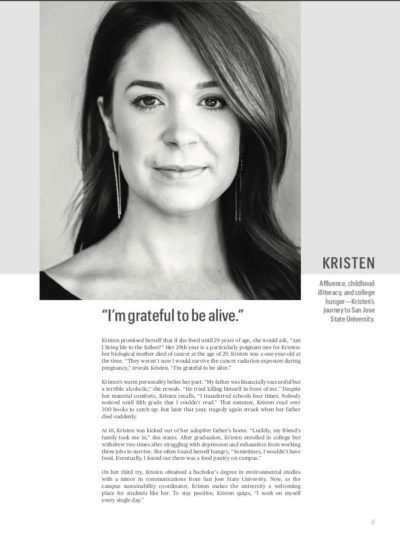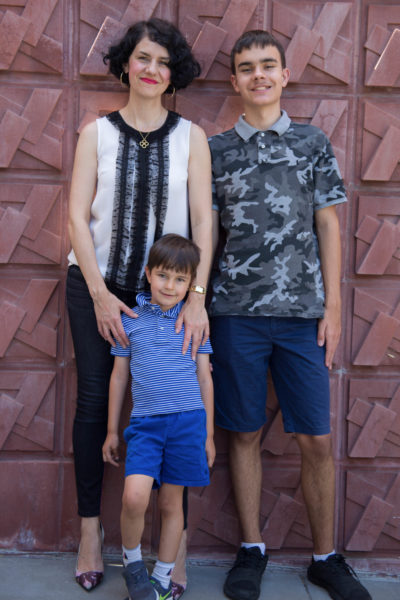Second Harvest supporters greet the faces of our clients on donation barrels, letters and flat screen televisions. This past holiday season, we introduced the idea that “the face of hunger is more familiar than you think” and challenged how people visualize hunger. Our own Zia MacWilliams, Manager of Federal Children’s Nutrition Programs, explored this idea through a photo-journalistic project with her sister, Zel. Their black and white portraits of resilient women showcase the diverse lives affected by hunger.
Zia introduced herself to the women featured in the project over dinners out at restaurants. Leaving the tape recorder off in these loud surroundings, Zia created special memories for her interview subjects. Breaking bread allowed Zia to form personal connections crucial to discussing difficult topics. During these meals, Zia learned which pizza toppings children preferred alongside discussing issues of addiction and abuse. These relationships began with respect and the generosity of sharing a special meal. Acknowledging each woman’s humanity and life beyond dealing with hunger uncovered deeper stories.
Building upon these informal conversations, the sisters assert the complexity behind female faces of hunger. Supporting their families, leaving a religion or surviving an abusive household, Natasha, Wafaa, Vanessa and Kristen showcase how hunger exists within broader lives. Simplistic narratives deem hunger a personal failure of laziness or ineptitude. However, the MacWilliams’ images remind readers how hunger impacts even the strongest and most resilient individuals. The tear on Vanessa’s face, Wafaa’s assertion of strength and Kristen‘s gratitude showcase how hunger is personal. Hunger might stand in the way of an environmental studies degree, a culinary career, or adapting to a new country.
Although the final selections for the piece’s publication in Content Magazine feature serious expressions, Zia and Zel also captured laughter and families enjoying each other’s company. This range of emotions argues that the face of hunger is indeed more familiar than we think. Creating an “us” and a “them” draws unnecessary and imaginary lines.



